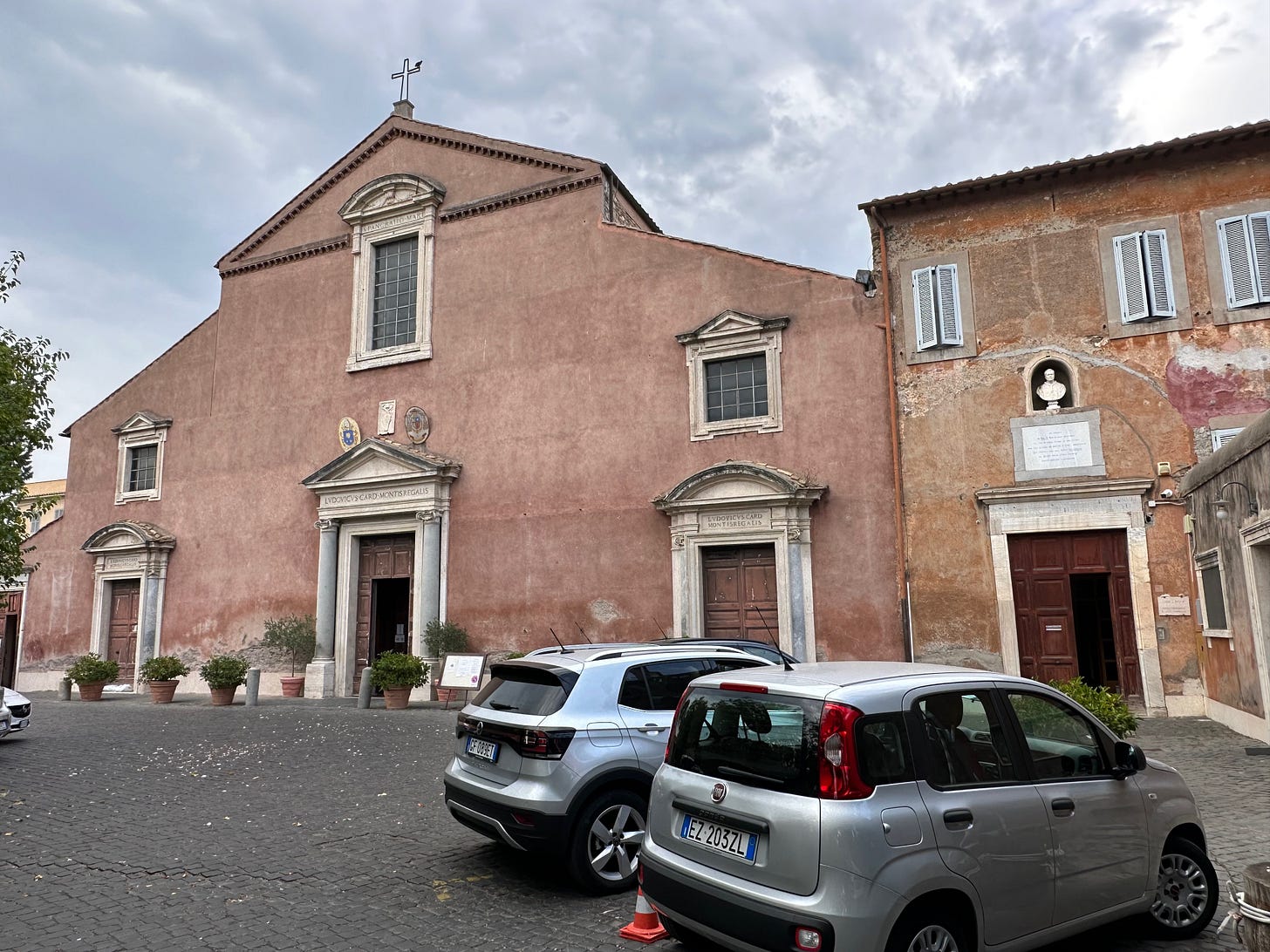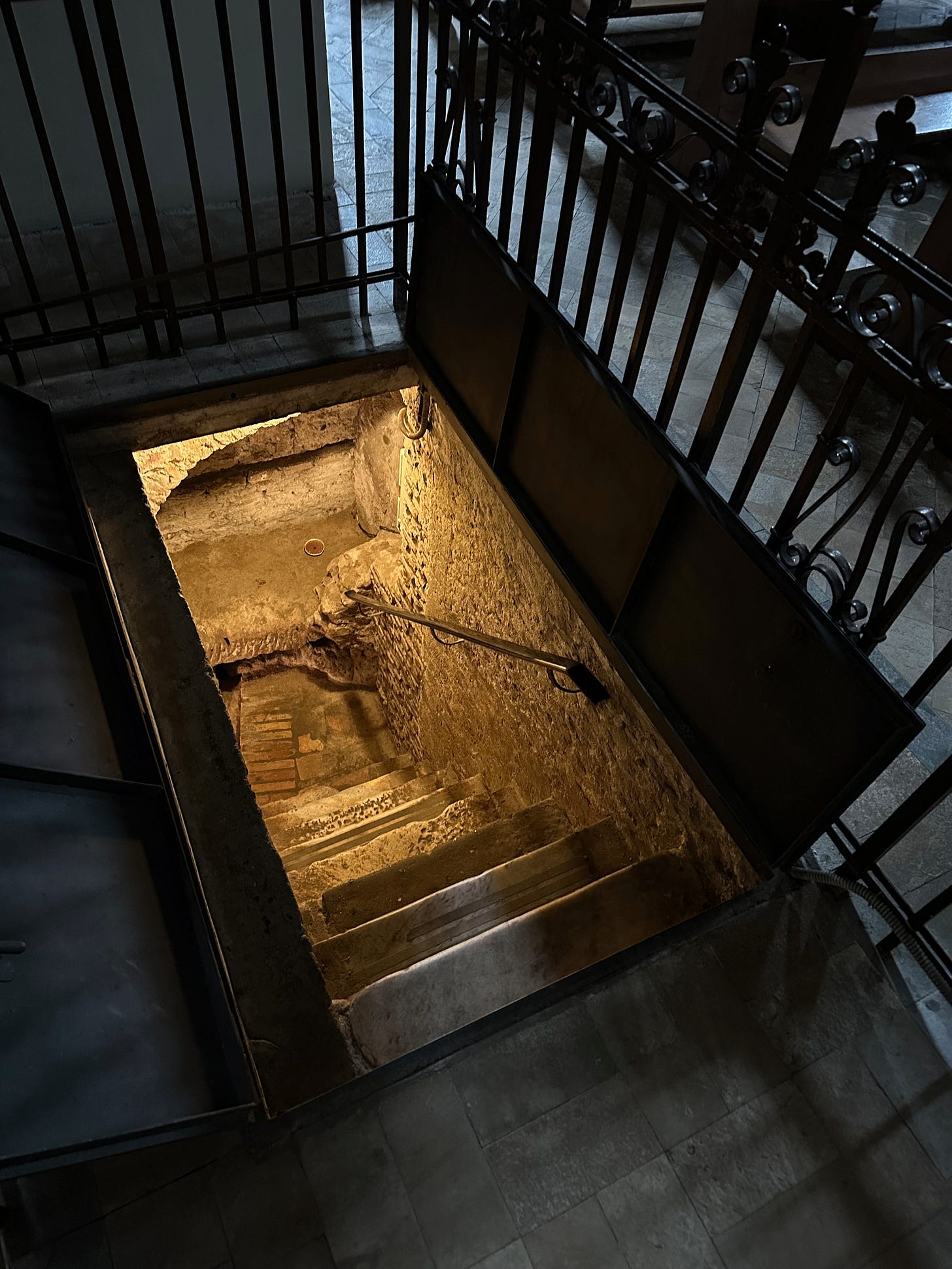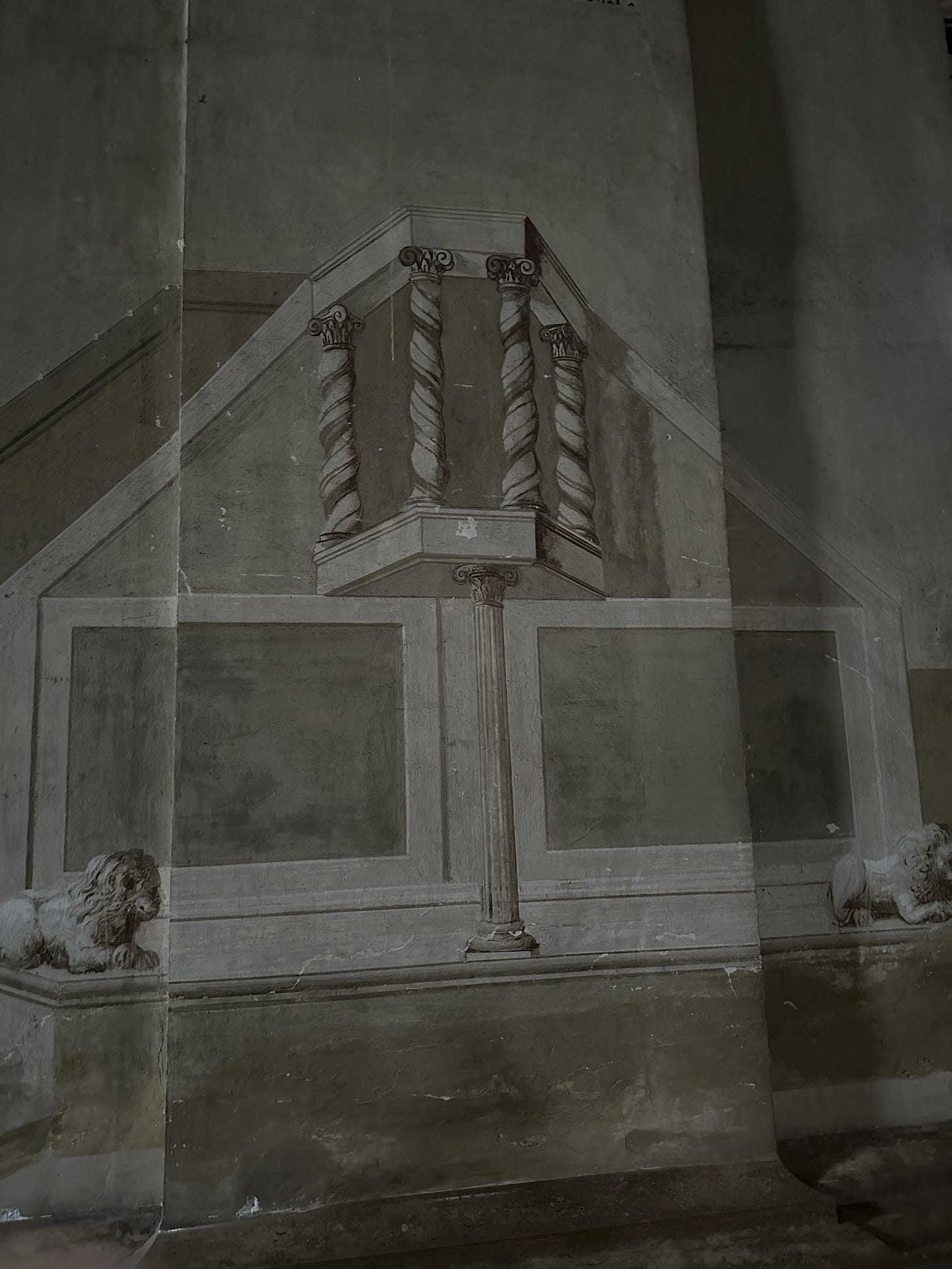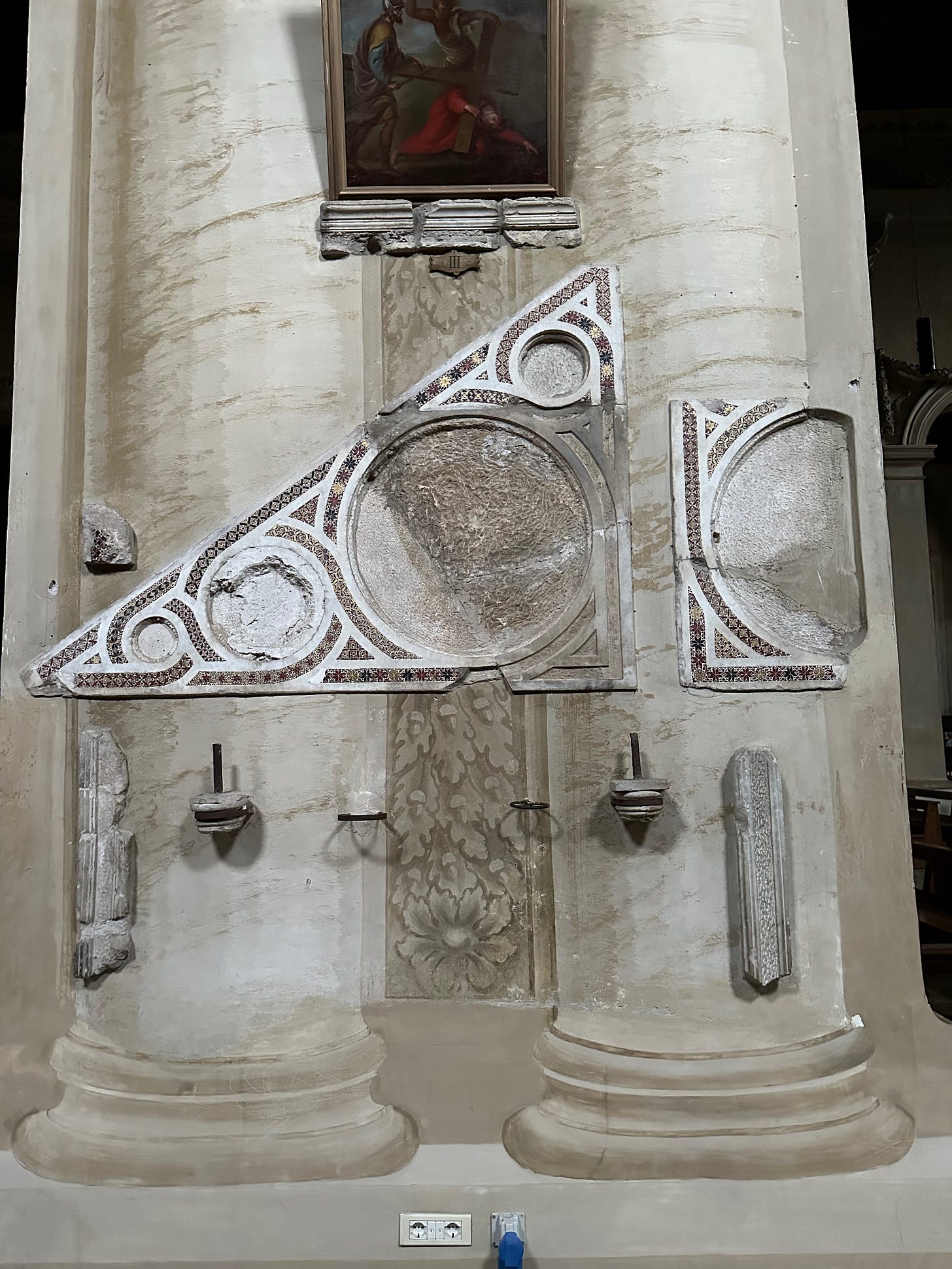I had read about this place, and I knew there were catacombs, so when I arrived to an entirely empty church, I was a little disappointed. But I loitered long enough to hear voices coming from below in the catacomb stairs. Two people emerged, one saying arrivederci, and I asked if I could see, posso vedere? He asked if I spoke Italian or Spanish, and when I said I did not, he nearly said no, but I quickly said that I would listen in any language. So I got a solo tour of 1800-year-old catacombs. And even better, unlike in the more famous of Roman catacombs, he had no problem with me taking photos.
He mixed the little bits of the English he knew into slow Italian, so I got enough of the story. He pointed to things, oil lamps embedded in the walls, symbols like the fish, ΙΧΘΥΣ, (ichthys) a Greek acronym “Ἰησοῦς Χριστός, Θεοῦ Υἱός, Σωτήρ” (Iēsous Christos, Theou Yios, Sōtēr, or 'Jesus Christ, Son of God, Saviour'), children’s graves (bambini? si!), that he knew I had some knowledge of what I was seeing.


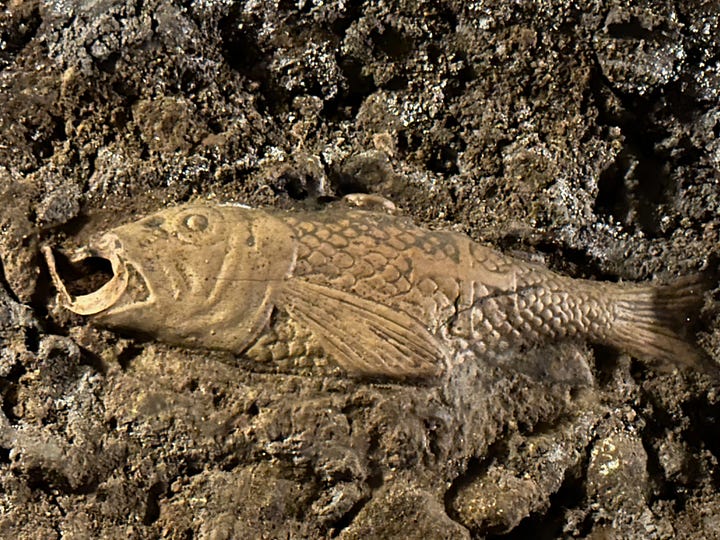
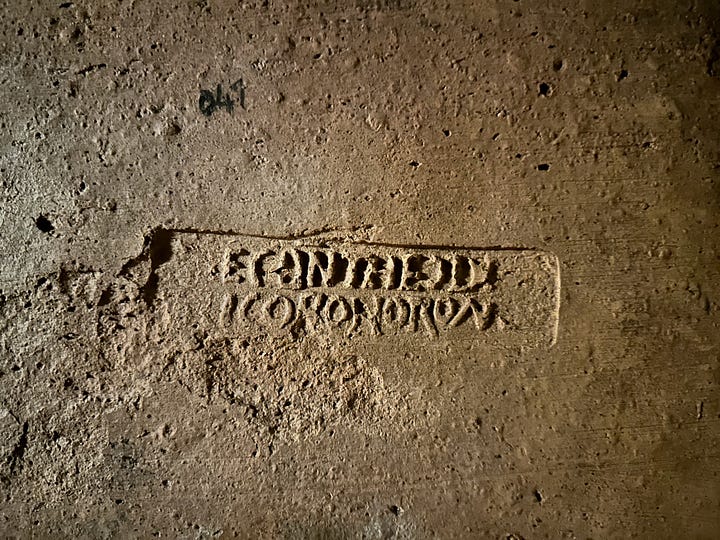
What were catacombs and why were they needed? Christian belief centered on the death and resurrection, both of Christ and of the believers, so the traditional Roman ritual of cremation was entirely unsuitable for a growing population that expected to be made physically whole and taken heavenward. What was required was a different kind of burial, one where bodies remained intact. But that required much more space, and real estate then, as now, could be very expensive. So a new typology, the catacombs, were the solution to a religious need on expensive land. Carved from tufa, a soft, volcanic stone that was relatively easy to remove but hardened upon contact with air, the great majority of the graves in the catacombs were the simplest. Called loculi, these were niches dug into the corridor walls, stacked like bunks. They would be covered over with brick or an earthenware slab and, if it could be afforded, a stone plate with some commemorative headstone-like carving. The poorest would have nothing more than a simple slab covering the niche. Often when the walls had been filled with bodies, the floor would simply be dug deeper to create more tiers beneath existing ones. Those of better means could afford a floor-to-ceiling grave situated in an arched niche, known as an arcosolium. These were richly decorated with painted surfaces. The truly wealthy could afford entire chapel-like rooms, or cubicula, family plots that could be fitted with fully architectural interiors.
Roman law stipulated that the city was solely for the living, save for the remains of the occasional emperor, and required all tombs to be outside city walls. The catacombs certainly conformed. Most are very far from the old city center. San Pancrazio lies well to the west of the Janiculum Hill. Contrary to common misconceptions, catacombs were no secret. It’s not possible the catacombs represented some clandestine project when Rome’s largest, the catacombs of San Callisto eventually held half a million bodies three levels deep. Nor were the catacombs a place to hide or to worship. They were foul smelling places, suitable only for brief visits to perform funerals or mark the anniversary of a loved one’s passing.
The catacombs at San Pancrazio. San Pancrazio himself was a 14-year-old victim of the Diocletianic persecutions for refusing to acknowledge pagan gods. He was entombed here in the catacombs, but I gather the location of his grave is no longer known, or it would certainly have been shown to me. Like at almost every catacomb, during the medieval period, virtually all human remains at San Pancrazio were looted for sale on the relic market (Psst, wanna buy the bones of Saint Peter?), so the graves are nearly all empty. I've read elsewhere that relics of his body are held here in the church. And although the catacombs are now named for San Pancrazio, the catacombs were already in use before his body was placed here and only took on his name because of the subsequent church structures dedicated to him built overtop the catacombs, the first around 500.
However, there are three tombs here of some significance, those of Saint Sophia, a pre-Constantinian pope named Saint Felix, and an unknown man known only as Botrys.
Saint Sophia, another Diocletianic martyr, is buried in a family plot with her three daughters Faith, Hope and Charity, entered from below via a stairway rising to a landing gallery, a combination of loculi on the sides with a single arcosolium at the far end, presumably for Saint Sophia herself. A second set of stairs climbs up and out of the tomb on the side opposite the arcosolium. Though there isn’t much evidence for the opulence of the place, or even decoration, the unique arrangement of the space makes it significant in the history of tomb architecture.
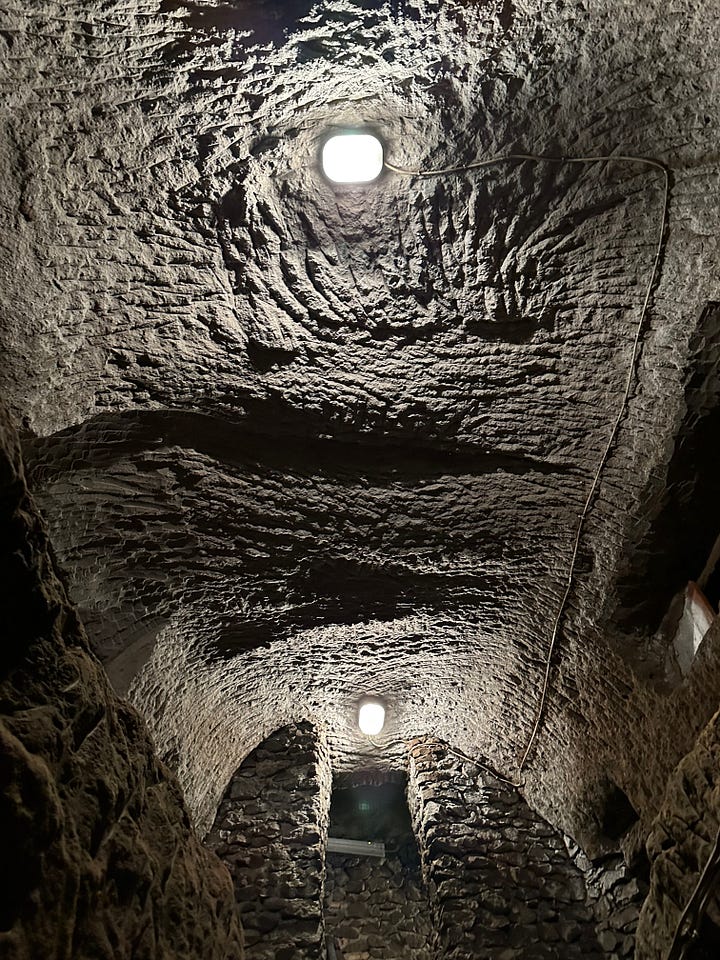
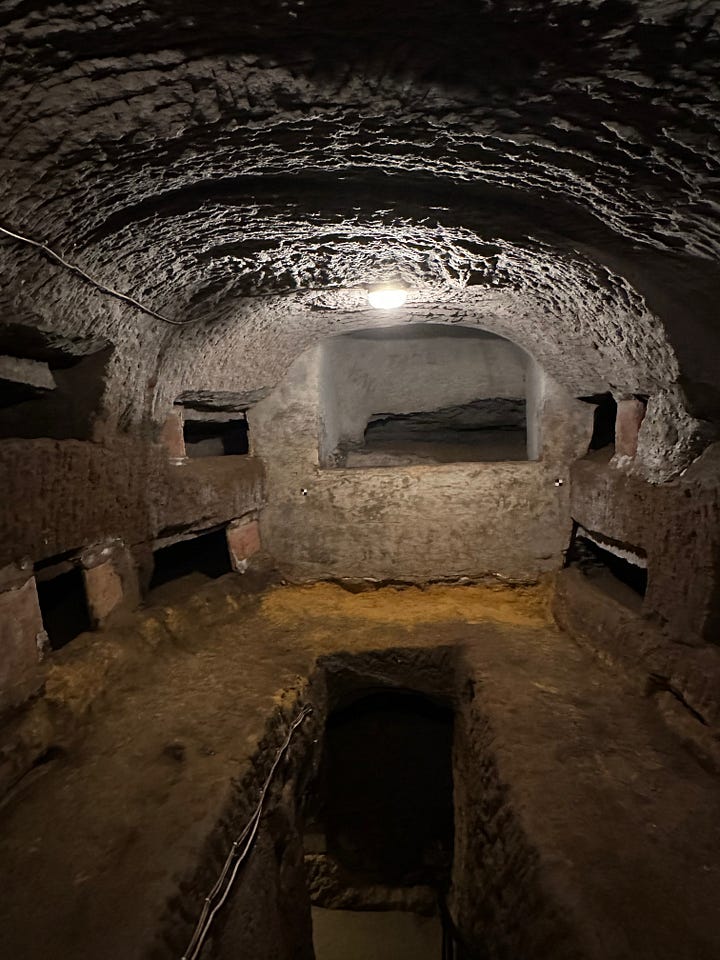
Saint Felix, already the 26th pope of the Catholic Church from 269 to 274, lived a generation before Pancrazio, and two generations before Christianity received the stamp of officialdom by the emperor Constantine. He was buried in this chamber beautifully painted in a style with hallmarks of the widespread influences of Pompeian wall painting, especially the spare geometric third style, accented with familiar Christian symbols, the angel, the dove and the fish. Quite a thing to see the tomb of a pope from before Christianity was the official religion of Rome.
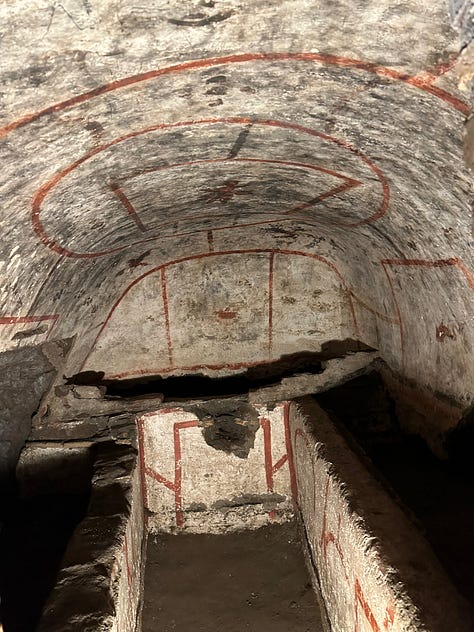
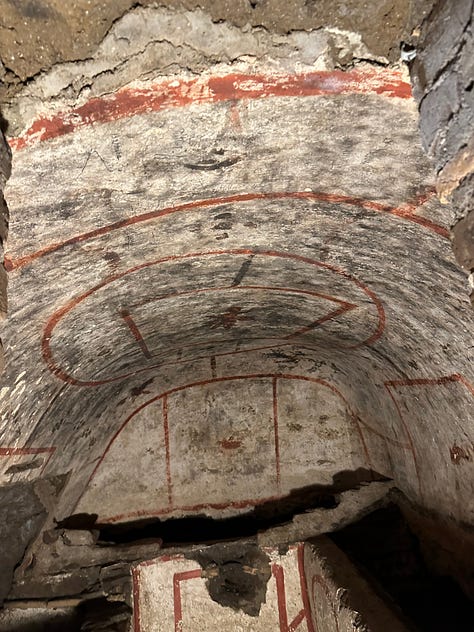

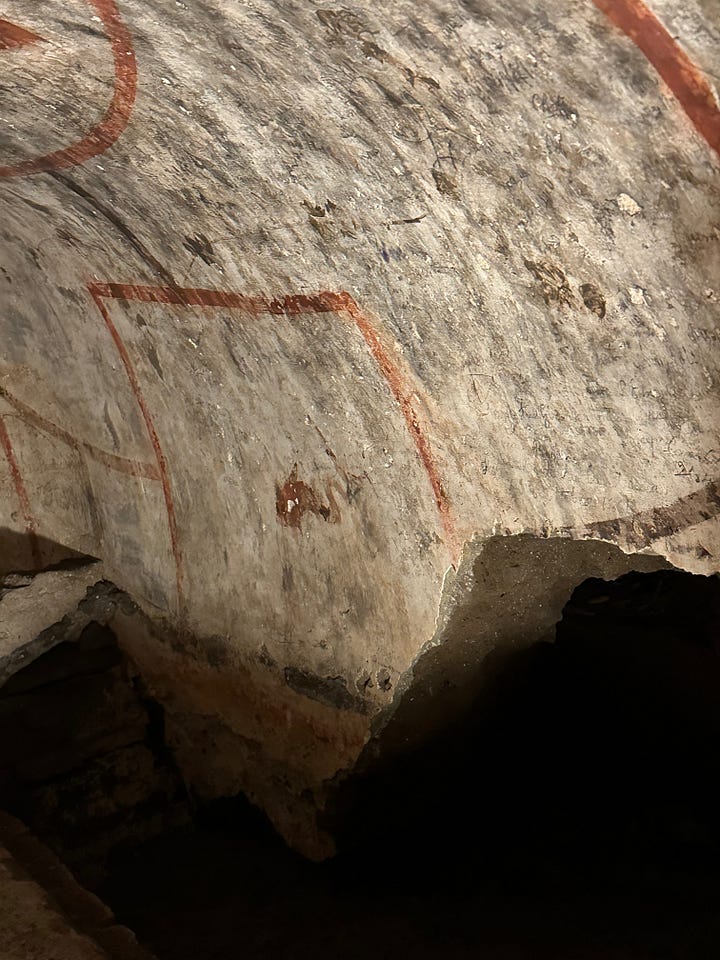
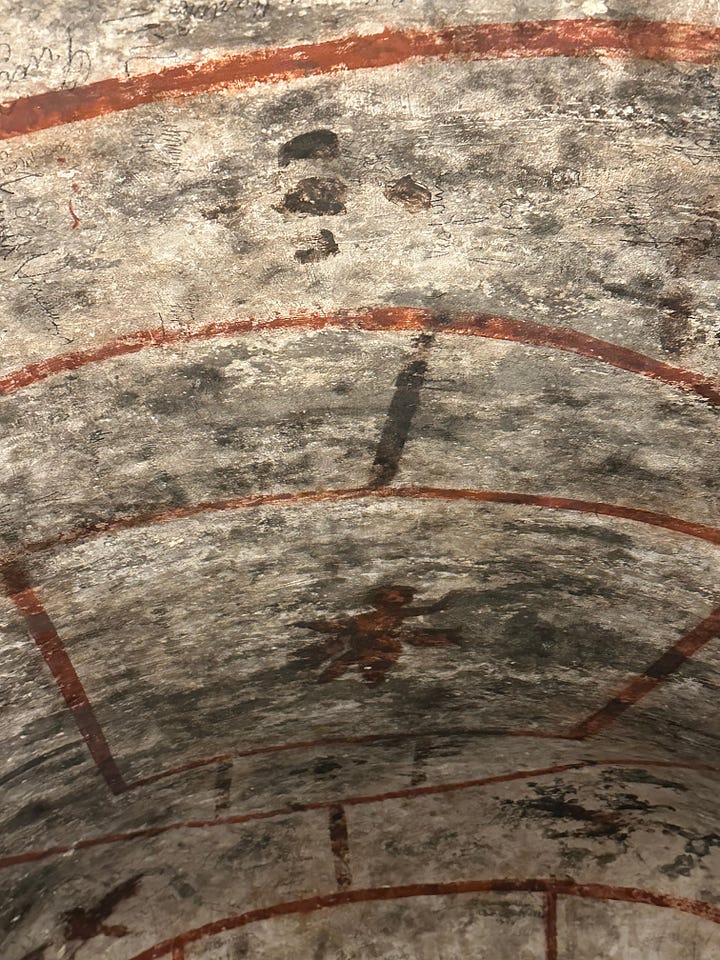
Botrys’ grave is marked with stone proclaimed him a Christian, which is somewhat peculiar in a place where everyone was a Christian. It is unclear the need for such a pronouncement, but it has provided a distinction to him that has committed his name to historical memory.


Back above ground, we visited the crypt. Like so many in Rome, this church was built, found inadequate for rapid growth, and consequently rebuilt. The current basilica is the second and dates to the early 7th century, when pilgrims venerating relics of the martyrs had become so numerous that there was a need to circulate them through the church without disturbing ritual services. The ambulatory, a semi-circular circulation route behind and below the apse, was first used in Old St. Peter’s and proved useful for the need, so was incorporated here as only the second ever to appear in a Christian structure.
And we visited the sacristy, its walls inlaid with face plates of graves, stone artifacts and bits of sculpture from a span of several centuries hanging on the walls, highlights including a stone mentioning Constantine by name and ornaments of the original basilica built around the beginning of the fifth century.
A bonus, he showed a cabinet of cannonballs from Napoleon’s invasions, which he mentioned more than once, ‘Le Bombe de Napoleon.’
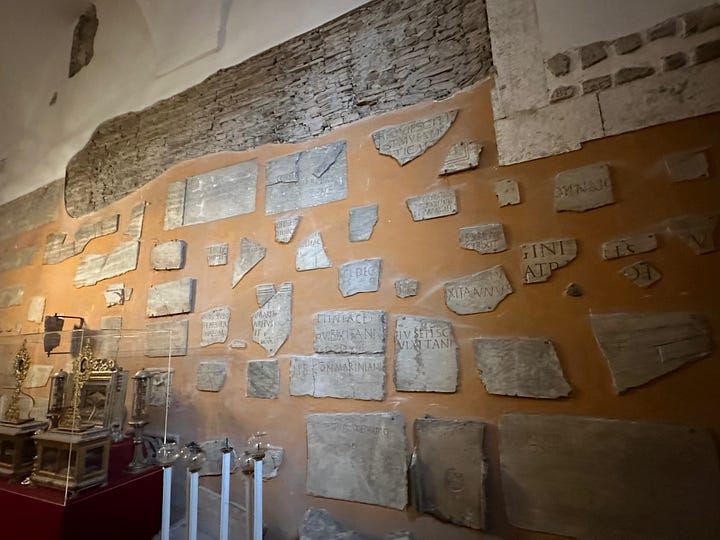
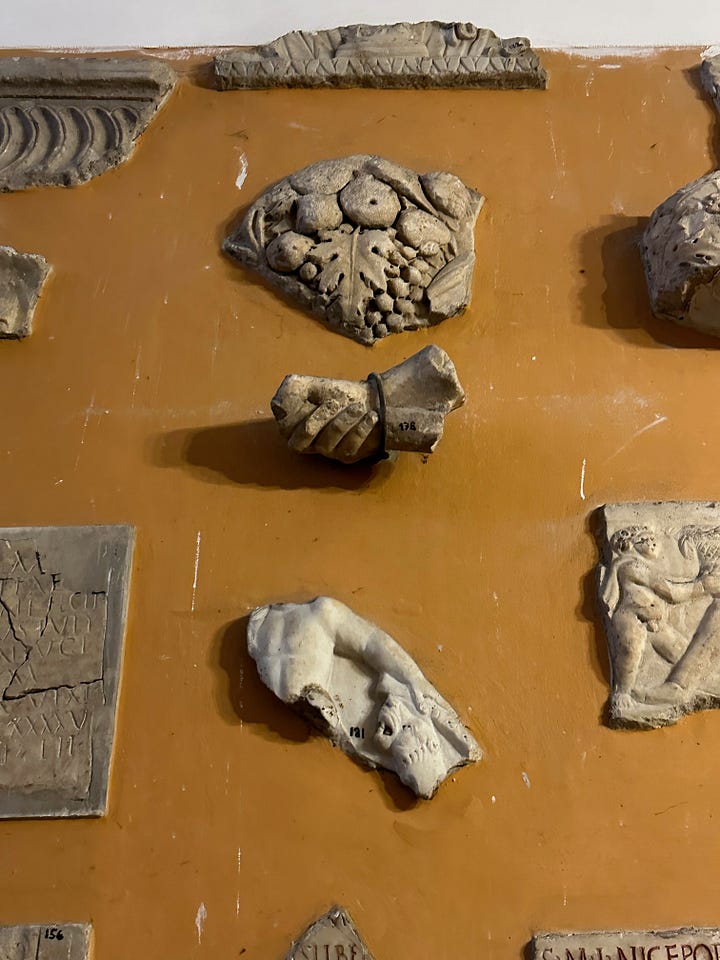


And after some more historical information about the decoration of the basilica itself, paintings, sculpture, details, he simply said ciao, walked out the door and disappeared.





